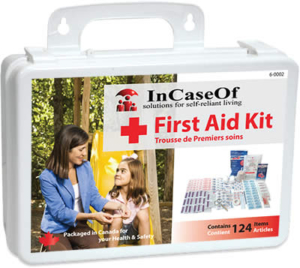First Aid and Medical Preparedness: What You Need to Know
The Importance of First Aid and Medical Preparedness
Knowledge of first aid equips you with the ability to administer life-saving care in critical situations, such as heart attacks, severe bleeding, or choking incidents. Effective first aid can stabilize a person’s condition and prevent it from worsening before professional medical assistance arrives.
Education: Enroll in a certified first aid and CPR course to learn the fundamentals of life-saving techniques. Regularly refresh your knowledge through updates and practice. Below are a mention of some of the fundamental life-saving techniques learned in a certified first aid and CPR course:

First Aid Training
- Cardiopulmonary Resuscitation (CPR): CPR is a technique used to maintain blood flow and provide oxygen to a person whose heart has stopped beating. It involves chest compressions and rescue breaths.
- Heimlich Maneuver: The Heimlich maneuver, also known as abdominal thrusts, is used to dislodge an object blocking a person’s airway. It’s used to help someone who is choking.
- AED (Automated External Defibrillator) Use: AEDs are devices that can deliver an electric shock to restore a normal heart rhythm in the case of sudden cardiac arrest. Know how to use an AED with proper training
- Bleeding Control: Learn how to control severe bleeding. Applying direct pressure, elevating the injured area, and using tourniquets (as a last resort) can help prevent excessive blood loss.
- Recovery Position: The recovery position is used for individuals who are unconscious but breathing. It helps keep their airway clear and minimizes the risk of aspiration.
More First Aid

- Rescue Breathing: Rescue breathing is used when someone is not breathing but has a pulse. It involves providing breaths to the person to ensure they receive oxygen.
- Recognition of Stroke Signs: Recognize the signs of a stroke, such as sudden numbness, confusion, trouble speaking, or severe headache.
- Assessment of Unconsciousness: Learn how to assess if a person is unconscious and not breathing.
- Managing Anaphylaxis: Anaphylaxis is a severe allergic reaction that can be life-threatening. Know how to use an epinephrine auto-injector (an epi-pen).
- Basic Wound Care: Proper wound care includes cleaning wounds, applying antiseptic, and covering them with sterile dressings to prevent infection.
- Recognizing Heart Attack Symptoms: Symptoms of a heart attack include chest pain, shortness of breath, and radiating pain in the arms or jaw.
- Child and Infant CPR: Know how to perform CPR on children and infants as their needs and techniques differ from those used on adults.
- Defusing Choking in Infants and Children: Know how to respond to choking in infants and children, as their airways are smaller and more easily obstructed.
- Spinal Injury Stabilization: Learn how to minimize movement and stabilize a person’s neck and spine when there is a potential spinal injury.
Essential First Aid Preparedness:
- First Aid Kits: Prepare well-organized first aid kits for your home, car, workplace, and outdoor adventures. Ensure they contain essential supplies like bandages, antiseptics, gauze, scissors, and pain relievers.

- Emergency Contact List: Maintain an updated list of emergency contacts, including local hospitals, doctors, and poison control centers. Keep this list easily accessible.
- Medications: Regularly check the expiration dates of medications and replenish your supply. Consider the medical needs of family members or dependents, including medications, medical equipment, and emergency plans tailored to their conditions.
- Sanitation and Hygiene: Stock sanitation and hygiene supplies, such as soap, disinfectants, and waste disposal materials, to maintain clean and safe environments during crises.
Medical Preparedness for Various Scenarios
- Natural Disasters: Understand the medical risks associated with natural disasters like hurricanes, earthquakes, or wildfires. Plan for these scenarios by having extra supplies and knowing how to provide first aid in crisis conditions.
- Pandemics: In light of recent global health challenges, having knowledge of infection control, quarantine measures, and telemedicine can be invaluable in pandemic situations.
- Outdoor Adventures: If you enjoy outdoor activities, equip yourself with wilderness first aid skills. This specialized knowledge can prove vital in remote areas where professional medical help may be distant.
- Home Accidents: Be ready for common home accidents. Ensure that your home is well-stocked with first aid supplies and that family members know how to use them.
Conclusion
First aid and medical preparedness are not only skills but also a mindset. Be ready to provide assistance in times of crisis. Educate yourself, maintain well-equipped first aid kits, and plan for emergency scenarios. You can significantly improve your ability to respond effectively when the unexpected occurs. Remember, the knowledge and resources you have today could be the difference between life and death in the future.



